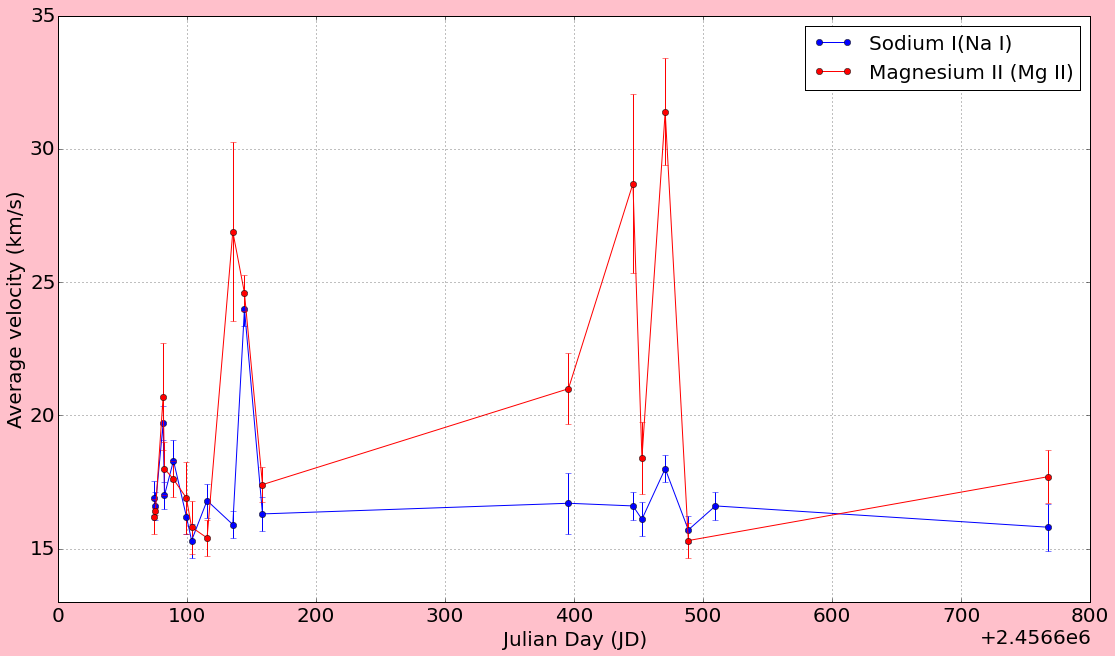Velocity variations in AB Aur
February 2018 »
Abstract:
The Astronomical Observatory of the Universidad de los Andes in Bogota, Colombia, did a spectral monitoring during 2014 and 2015 to AB Aurigae, the brightest Herbig Ae/be star in the northern hemisphere. The aim of this project is applying spectral techniques, in order to identify specific features that could help us not only to understand how this star is forming, but also to establish a pattern to explain general star formation processes. We have recorded 19 legible spectra with a resolving power of R = 11,0000. We looked for the prominent absorption lines, the Sodium doublet at 5890 ̊Aand 5896 ̊A, respectively and Magnesium II at 4481 Å; to measure radial velocities of the star, but, we did not find a constant value. Instead, it ranges from 15 km/s to 32 km/s. This variability could be explained by means of an oscillation or pulsation of the external layers of the star. Other variabilities are observed in some emission lines: Hα, Hβ, He I at 5876 ̊A and Fe II at 5018 Å. It seems this phenomenon could be typical in stars that are forming and have a circumstellar disk around themselves. This variability is associated with the nonhomogeneous surface of the star and the interaction that it has with its disk. Results of this interaction could be seen also in the stellar wind ejected by the star. This project is still in course and new data is expected to be taken soon.
Authors:
- Luisa Rodriguez